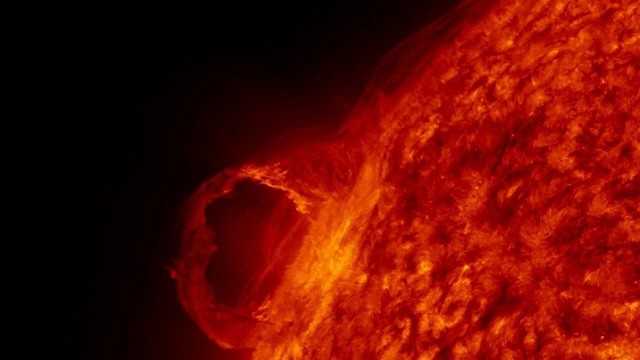The strongest solar flare in recent times has struck Earth and went initially unnoticed. This phenomenon has been confirmed by the European Space Agency (ESA), which reported earlier this week that its Solar Orbiter detected a class X12 solar flare in May 2024. The orbiter's findings indicated that last month's solar storm surpassed its recent predecessors.
Solar flares are solar storms that release highly energized, radiative particles into space. It happens when energy is released from the entangling magnetic fields of the Sun. X-class solar flares are the largest and most powerful out of all the flare classes. In previous solar storm events, solar flares have caused widespread radio blackouts, geomagnetic storms, and even radiation storms.
The Sun is currently in its Solar Cycle 25 which began in December 2019 and is projected to end around the year 2030. In recent years, scientific projections show the ongoing cycle will reach its solar maximum in 2025. However, other predictions suggest that the climax of solar activity may happen as early as 2024, potentially increasing the frequency and intensity of disruptive solar storms.
Strongest Solar Flare

In its report on Tuesday, June 18, the ESA confirmed that the X12 flare during the weekend of May 10-12 in 2024 was the strongest solar flare in recent years and the current solar cycle. The said solar storm caused large-scale radio blackouts on Earth, created beautiful auroras, and produced powerful geomagnetic storms. This massive solar explosion came from the "hyperactive" sunspot region called AR3664.
The phenomenon was detected at AR3664 during the ESA-led Solar Orbiter mission last month. On May 20, more than a week after the powerful solar event, the X-ray instrument STIX of the Solar Orbiter observed the solar storm and classified it as an X12 class solar flare. These types of flares are less frequent than its weaker counterparts.
What are Solar Flares?
According to the ESA, solar flares can reach millions of degrees and create a strong explosive radiation across space, sending particles ranging from radio waves to X-rays and gamma rays. The severity or intensity of a solar flare varies. Below are their following categories:
- X- class flares
- M-class flares
- C-class flares
- B-class flares
- A-class flares
Prior to the May 2024 X12 solar storm, the most powerful solar flares were detected during the Halloween of 2003. The space weather event was accompanied by coronal mass ejections (CMEs), causing geomagnetic storms that disrupted various satellites at that time and resulted in localized power outages in Sweden.
Currently, scientists are expecting the occurrence of further above-average solar storms in the coming months and over the next year. As mentioned earlier the Solar Cycle 25 is projected to peak soon and this is because the number of solar cycle sunspot is estimated to increase by 2025, according to the Space Weather Prediction.
Related Article: Can a Solar Flare Be Powerful Enough to Wipe Out All Life on Earth?
© 2025 NatureWorldNews.com All rights reserved. Do not reproduce without permission.





